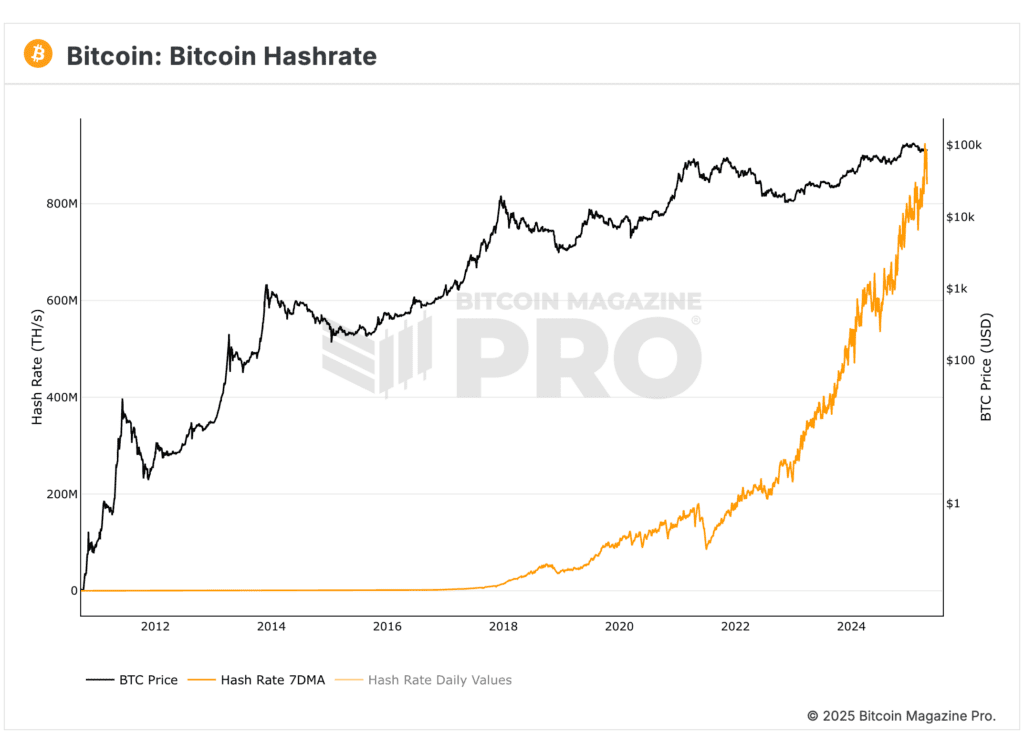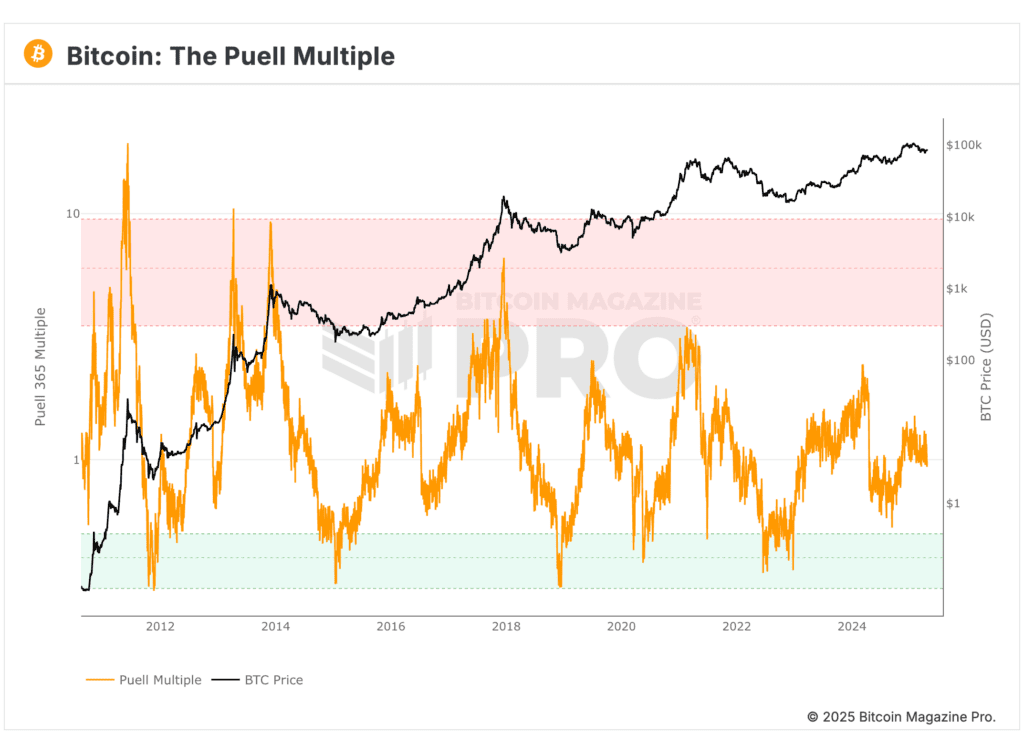Bitcoin has lengthy adopted a predictable sample pushed by its halving occasions, which happen roughly each 4 years. These halving occasions, the place the block reward for miners is halved, have traditionally been adopted by important Bitcoin worth surges. Nonetheless, as we transfer towards the following halving in 2028, many are questioning whether or not the outdated 4-year cycle will proceed or if Bitcoin is on the cusp of a extra basic change. In this text, we delve into the present state of Bitcoin’s market dynamics, how the 4-year cycle has formed its historical past, and what the longer term holds for this revolutionary asset.
The 4-Yr Cycle: The Historic Surge Sample Of The Bitcoin Price
Halving occasions have been pivotal moments in its historical past, instantly impacting the bitcoin worth. Every halving reduces the block reward for miners by 50%, resulting in a lower within the issuance charge of bitcoin. The result’s usually a big worth enhance because the diminished provide of latest cash drives up demand. Traditionally, Bitcoin has skilled substantial worth surges within the 12 months following every halving occasion, albeit with some variation between cycles.
In the primary halving occasion in 2012, the reward dropped from 50 BTC to 25 BTC per block, resulting in a surge in bitcoin’s worth that reached a peak in 2013. The second halving in 2016, which diminished the reward from 25 BTC to 12.5 BTC, was adopted by a big bull run, culminating in bitcoin’s meteoric rise to almost $20,000 in December 2017. The third halving in 2020, decreasing the reward to six.25 BTC, preceded a rally that noticed bitcoin’s worth surpass $60,000 in 2021.
A Yr After the 2024 Halving: A Softer Price Motion Than Anticipated
Nonetheless, the most recent halving in April 2024 has seen a distinct type of worth motion. Whereas there was some optimistic appreciation in bitcoin’s worth, the huge exponential progress that many anticipated has been notably absent. As of the one-year mark after the halving, bitcoin’s worth has risen by about 40%, which, whereas optimistic, is much beneath the explosive returns seen in earlier cycles, such because the 2020-2021 rally.
Traditionally, Bitcoin’s worth has skilled a interval of consolidation following every halving occasion, the place the market adjusts to the brand new inflation charge. After this adjustment part, a considerable rally often ensues inside the subsequent 12 to 18 months. Provided that bitcoin has proven some optimistic motion, many nonetheless anticipate the value to rise considerably within the second half of 2025, following the standard post-halving cycle.
Bitcoin’s Hashrate and Miner Income: An Vital Sign

One of many extra essential indicators of Bitcoin’s well being post-halving is its hashrate, which refers back to the whole computational energy of the community. Because the halving occasion in 2024, Bitcoin’s hashrate has continued to climb. In reality, the hashrate has surged by nearly 50%, regardless of the discount in miner rewards. It is a testomony to the rising power of Bitcoin’s community and the rising competitors amongst miners to safe the block rewards.

Moreover, Bitcoin’s Puell a number of, which measures miner income relative to the community’s worth, additionally dropped considerably after the halving. Nonetheless, it has since rebounded, signaling that the market is stabilizing and making ready for the following part of the cycle. These indicators counsel that Bitcoin’s basic community power is unbroken, even because the market adjusts to a decrease block reward.
The Finish of the 4-Yr Cycle: What’s Altering?
Regardless of the power of Bitcoin’s community and the continued institutional curiosity, there are indicators that the standard 4-year halving cycle might not be as related sooner or later. As of now, 94.5% of Bitcoin’s whole provide has already been mined, and by the point of the following halving in 2028, almost 97% of all Bitcoin will probably be in circulation.
The diminished circulation of latest BTC into the market implies that the value might not be as influenced by the halving occasions. The quantity of latest BTC being mined each day after the 2028 halving will probably be minimal—solely round 225 BTC per day, a quantity that can barely register on each day inflows in comparison with present ranges of tens of 1000’s of BTC.
Because the inflation charge of Bitcoin continues to lower, it’s seemingly that Bitcoin’s worth motion will more and more be pushed by macroeconomic elements quite than the halving cycle. Institutional curiosity in Bitcoin has grown considerably lately, and it will seemingly proceed to affect the value. Moreover, Bitcoin’s correlation with conventional belongings just like the S&P 500 has strengthened, suggesting that Bitcoin’s worth may start to comply with extra standard liquidity and enterprise cycles.
The Influence of Macroeconomics: Bitcoin’s Shift Towards Conventional Enterprise Cycles
Bitcoin’s relationship with conventional monetary markets, significantly the S&P 500, has turn out to be considerably aligned lately. This correlation grew considerably after the 2020 COVID-induced market downturn, as huge liquidity injections from central banks led to a pointy rise in asset costs, together with bitcoin.
Trying ahead, it’s seemingly that Bitcoin will turn out to be extra aligned with international liquidity cycles and enterprise cycles. Fairly than being solely pushed by the halving occasions, Bitcoin’s worth might begin to mirror broader financial developments, significantly as institutional traders turn out to be an much more dominant pressure available in the market.
If Bitcoin follows these conventional enterprise cycles, the function of halvings in driving worth motion might diminish. Instead, Bitcoin may expertise extra gradual worth actions, influenced by elements such because the growth and contraction of world liquidity, investor sentiment, and market cycles which can be acquainted to conventional belongings.
The 2028 Halving and Past: A New Period for Bitcoin
The upcoming 2028 halving occasion is predicted to be a vital turning level for Bitcoin. By this level, the community may have reached almost its most provide, and the block reward will probably be diminished to only 1.5625 BTC per block. This can mark a big shift in Bitcoin’s inflation charge, as the quantity of latest bitcoin coming into circulation will probably be minimal.
It’s seemingly that the 2028 halving would be the final to have a profound influence on Bitcoin’s worth. After this, Bitcoin might not expertise the standard post-halving worth surges which have characterised its historical past. Instead, Bitcoin’s worth motion will seemingly be pushed by a mix of institutional curiosity, international liquidity cycles, and conventional market forces.
In Conclusion: A Altering Panorama for Bitcoin
Bitcoin’s conventional 4-year halving cycle has been a basic driver of its worth historical past, however the market is evolving. Because the block reward decreases and Bitcoin’s circulating provide nears its most, the affect of halving’s on worth motion will seemingly diminish. Instead, Bitcoin will in all probability comply with extra standard enterprise and liquidity cycles, just like different main belongings. This shift will probably be pushed by the rising institutional curiosity in Bitcoin, its rising correlation with conventional markets, and the evolving function of Bitcoin within the broader financial panorama.
As we look forward to the 2028 halving and past, it’s clear that Bitcoin’s future ought to be formed by macroeconomic developments quite than the outdated cycle-driven mannequin. Whereas this may occasionally change the best way we strategy Bitcoin funding and evaluation, it additionally opens up thrilling prospects for Bitcoin’s function within the international financial system.
To discover reside knowledge and keep knowledgeable on the most recent evaluation, go to bitcoinmagazinepro.com.
Disclaimer: This text is for informational functions solely and shouldn’t be thought of monetary recommendation. At all times do your personal analysis earlier than making any funding selections.

